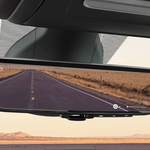GM looking to leap ahead of consumer preference for embedded technology in the vehicle.
A typical parent-teen conversation:
PARENT: “I’m on my way. Be ready when I get there.”
TEEN: “When will you get here?”
P: “Assistant, send Sherry my ETA.”
T: “Got it. I’ll be ready.”
All this happens without the parent ever taking their hands off the wheel. In fact, if you need to order pizza on the way home, you can do that as well—even pay for the meal, all with voice commands while driving.
GM announced a more embedded relationship for its in-vehicle technology starting with Chevorlet, Buick, GMC and Cadillac vehicles in various global regions beginning in 2021.
A broader deployment for the system has been planned for the following years.
The move should come as no surprise if you’ve been following the vehicle manufacturer over the past few years. GM has restructured, and seems to have developed a laser focus on future markets.
The company has been a leader in EV and AV development. Embedded in-vehicle technology seems to be a logical extension of the company’s current strategy.
Mobile devices have become a central aspect of almost every consumer’s lifestyle. The ability to create that seamless integration to the in-vehicle experience creates an opportunity GM believe consumers desire.
The company’s research indicates customers prefer an embedded technology experience in the vehicle, with a more transparent connection between their mobile devices and their vehicles. A handsfree passenger cabin has become more of a requirement in most states.
The company understands that safety will be just as important an impetus for embedded technology as convenience.
“We will continue to offer our own unique infotainment features that only GM can deliver, such as service recommendations, vehicle health status, in-vehicle commerce and more, with the Google applications and services complementing our offerings.” ~ Santiago Chamorro, vice president for Global Connected Customer Experience, GM
Some of the enhanced embedded features:
Voice Assistant: With the built-in Google Assistant, drivers can get things done hands-free. Drivers can use the Assistant to make calls or text a friend, change the radio station or podcast, close the garage door (requires compatible smart home devices) or adjust the temperature, all while keeping their eyes on the road and hands on the wheel.
Embedded Navigation: Google Maps in the vehicle is constantly up-to-date and helps drivers navigate with real-time traffic information, automatic re-routing and lane guidance. With the Assistant, drivers can use voice to navigate home, share their ETA, find the nearest gas station and EV charging stations (based on availability) or ask about a store’s hours without needing a phone.
In-Vehicle Applications: The Google Play Store lets drivers find their favorite apps and services designed specifically for in-vehicle use. Drivers can listen to the same albums, podcasts and audiobooks in the vehicle as at home and stay connected with their most important contacts on communication apps.
Hey, What About My Siri?
One thing we know about mobile devices, people have preferences. Along with that consumer preference comes a strong sense of loyalty.
When we inquired about consumers with an Apple preference, GM says choice is important to their customers, so they will continue to offer projection capabilities—Apple CarPlay and Android Auto—with the newly announced integration.
![banner right]()
![banner right]()












